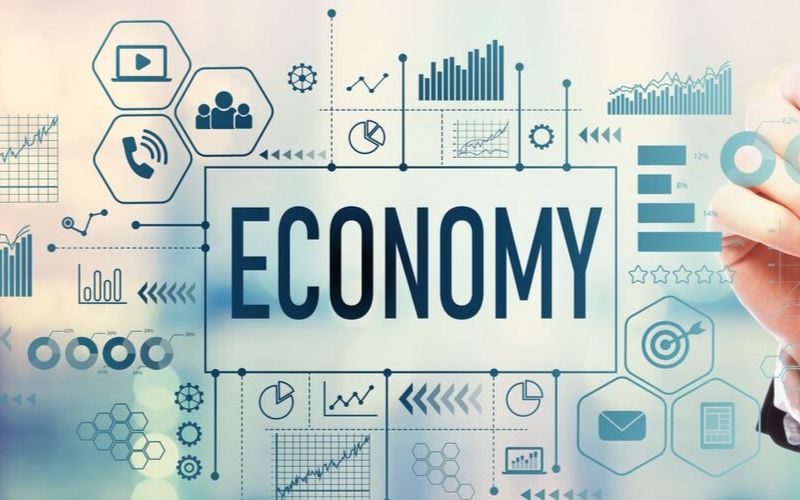Hey gang, get up to speed on this week’s financial trends with my market updates.
This Week’s Economic Pulse
– Commsec have an amazing chart which tracks luxury car sales to house prices which points to a strong correlation between the two.
I talked last week about general car sales falling 10 per cent in August and we’ve also been following the rise in house prices in Sydney and Melbourne over the last couple of months.
Guess what? While overall car sales have been falling, luxury car sales are now rising and that turnaround started when house prices started to pick up.
– The drop in business confidence means business people are not flying as much and planes have more spare seats. As a result airfares, for both discount and business class seats, are falling at the fastest pace in 7 years.
It’s a good time to fly.
– Aussies seem to have reigned in their credit card spending. The average balance on a credit card is around $3000 and that hasn’t changed in 12 years.
What has changed is that we’re using our credit cards a lot less and outstanding balances have been falling. Although it makes you wonder whether a lot of that activity has switched from credit cards to the buy now-pay later instalment plans.
Getting That Credit Card Debt Under Control
It’s fair to say credit cards are the most potent weapon of mass financial destruction since the Loan Shark and Pay Day loans. The convenience and flexibility of credit cards means it’s so easy for them to get out of hand and lead to serious financial distress.
To avoid getting into trouble in the first place, or get back in control of an existing debt, here are my five golden rules for using credit cards.
1. Pay off the most expensive debt first.
When you have a high interest debt, like an outstanding credit card balance, paying it off must be your priority.
If that pile of expensive debt looks like it’ll take a while to pay off then consider moving the balance on to your lowest interest rate loan. If this transfer carries a fee, you can use an online calculator to do some rough sums to make sure the interest savings are worthwhile.
2. Repay more than the minimum.
Making the minimum repayment just means you’ll avoid late charges and can continue using the card. Depending on the contract, it might not even cover the interest accrued each month, and that’s trouble.
Compound interest (interest paid on interest) is a powerful thing when you’re saving, but when it’s going against you it’s just as powerful in blowing out debts, so make voluntary repayments a priority.
If you’re really struggling to make repayments at the end of each month, set up a direct debit so that each pay cycle the credit card gets paid off first.
3. Get the best deal.
Don’t get sucked into rewards programs or account keeping fees if you’re not benefiting from them. There are plenty of fee-free cards that offer similar credit limits, flexibility and interest terms as fee paying options.
Visit one of the many online credit card comparison websites, like Finder or Cannex to find the right credit card for you.
4. Be aware of interest free periods.
Usually the interest free period starts at the date of your last statement, not when you make a new purchase, so it’s important to know your billing cycle to avoid paying interest. Also, in most cases you only get the purchases interest-free if you pay off your entire balance by the due date each month.
5. If you can’t afford it, don’t get it.
If you lack the financial capacity or self-control to service a high interest debt, cut up the credit card before it becomes a problem and ask the bank to stop offering extensions.
With debit cards able to perform a lot of the functions that were previously only available to credit cards, you can get by alright with the savings based alternative.
Maybe There Is a Silver Lining
An interesting research report from ETF Securities is proposing that investing in silver could be better than gold. Gold bugs have been celebrating over the last year of two as the precious metal has skyrocketed in value (especially in Australian dollar terms) because of the global uncertainties around trade and potential economic recessions.
But ETF Securities (which has a silver Exchange traded fund called ETFS Physical Silver) says silver may have better prospects because;
- Silver has historically performed in a similar way to gold
- 50 per cent of silver is used in industrial applications including
solar panel cells and automotive electrics
- A supply shortage of silver may impact price in the future
“Moving forward, increased demand for silver is expected to come from the solar energy sector, since the precious metal is a great conductor of both heat and electricity, making it perfect for use in solar panels. Solar currently accounts for 2% of the world’s generated power that is expected to grow to 7% by 2030.”
“Additionally, the progressive move towards electrical vehicles will increase the use of silver in cars too. Last year, around 36 million ounces of silver were used in automobiles. Each car itself uses about half an ounce of silver but the continuing electrification of cars is set to see that increase to one ounce. “To put this in context, every electrical action in a modern car is activated with silver-coated contacts. Basic functions such as starting the engine, opening power windows, adjusting power seats and closing a power trunk are all activated using a silver membrane switch.”
It’s really interesting isn’t it?




























Trending